Pilot Badge, by C. E. Juncker (in nickel silver)
CATEGORY: Version
SKU: 01.GTR.0701.101.04.001
Estimated market value:
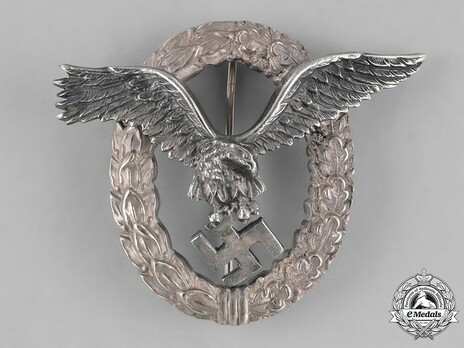
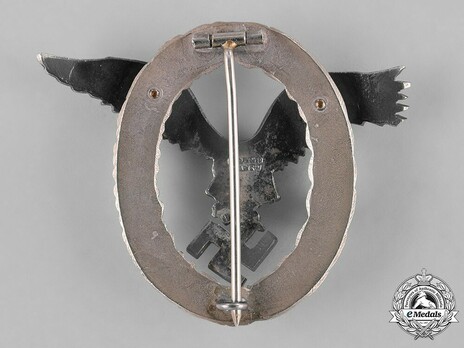
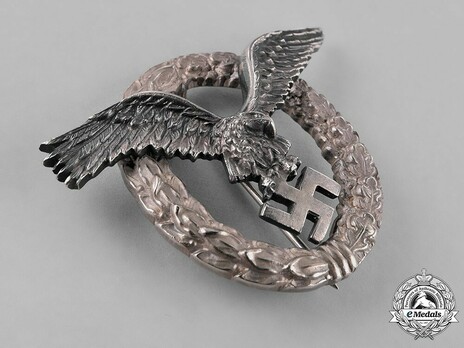
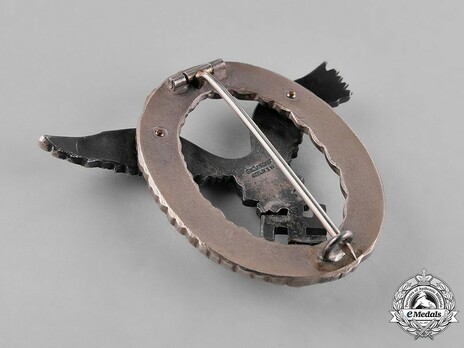
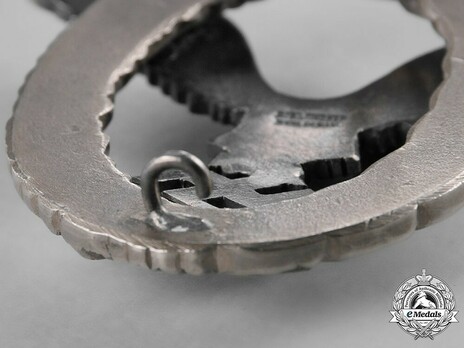
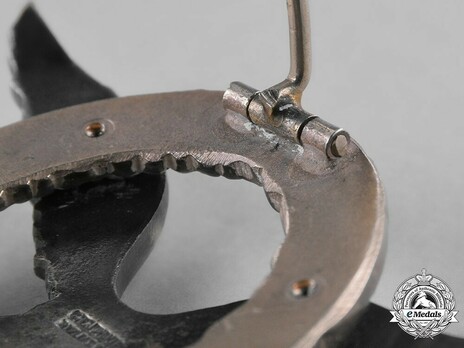
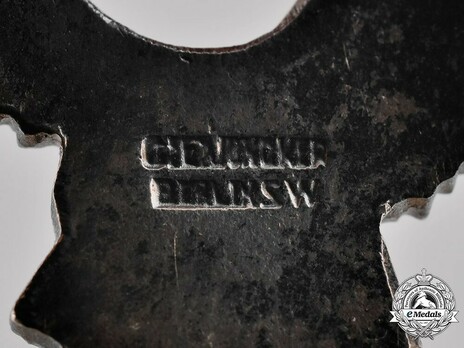
Estimated market value:
(Flugzeugführerabzeichen). Instituted 1935. (Issued 1936-1945). Constructed of silvered nickel, this badge is composed of a richly-detailed, narrow version oak leaf wreath bearing a stylized “J-1” type Luftwaffe eagle in nickel silver clutching a hand-filed mobile swastika, the reverse presents with a barrel hinge accommodating a vertical pinback with a sharp tip meeting an elongated round wire catch, two rivets at the top half of the reverse of the wreath securely hold the obverse eagle in position, measures 65.88 mm (w) x 53.12 mm (h), weighs 45.1 g, signs of polishing, and in very fine condition.
The Pilot's Badge was officially introduced by Hermann Göring on August 12th, 1935, and it was conferred upon all active military personnel who completed their flying training and were awarded a military pilot’s license.
The establishment of the Badge is often cited as March 26th, 1936, but in actuality, it was first referenced on May 27th, 1935, in the official orders of the Luftwaffe (Luftwaffe Verordnungsblatt). As stated above, it was likely instituted around August 12th, 1935, and its regulations were first published on November 27th, 1935.
In 1935, a cloth version was produced and authorised for wear of light jackets. The Badge for Officers was produced from bullion, while the Badge for Non-Commissioned Officers and enlisted men was produced from cotton thread.
The last recorded conferral of the award was on May 2nd, 1944.
All badges feature a solid mass between the legs of the eagle, however, a few original examples were manufactured with an open space between the eagle’s legs. This variation should strictly be considered a production variation.

Comments
Sign in to comment and reply.


Scroll Top